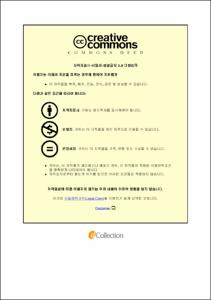3D 및 4D 프린팅, 증강현실, 로봇을 활용한 정밀수술을 위한 의료영상 기반 수술 가이드 기술
- Alternative Title
- A medical image-based surgical guiding technique for precision surgery using 3D and 4D printing, augmented reality, and robot
- Abstract
- The demographic shift towards an aging population has amplified the need for minimally removed normal tissues that preserve healthy tissue and reduce recovery times. Traditional surgical methods, heavily reliant on surgeon experience, face challenges in correlating imaging data with patient anatomy during operations. Advanced diagnostic imaging technologies like computed tomography (CT), magnetic resonance imaging (MRI) have significantly improved preoperative planning and intraoperative navigation. However, directly translating anatomical information and surgical plans from CT and MRI images to the patient body in the operating room remains a challenge. This demand has spurred advancements in surgical methods using 3D printing to enhance precision and efficiency. 3D printing creates 3D objects by fusing or depositing materials such as plastic, metal, powder, and resin. This technology has rapidly proliferated in the medical field due to its ability to easily fabricate complex shapes, and it is being applied to patient-specific surgical guides, implants, and simulators. Patient- specific 3D-printed surgical guides offer high accuracy in marking resection areas and have demonstrated success in fields such as orthopedics, dentistry, and plastic surgery. Despite their precision, 3D-printed guides face limitations such as material constraints, lengthy production times, and sterilization challenges. The primary motivation for this study is to address the limitations of 3D-printed surgical guides by integrating 4D printing, augmented reality (AR), and robotic technology. These advancements aim to overcome challenges related to material constraints, production times, and sterilization while meeting clinical needs for minimally invasive procedures, additional anatomical spatial information, streamlined workflows, and increased precision. In this study, we developed and evaluated a kidney cancer surgical guide using 3D printing technology. To address the medical need for minimally invasive surgery, we created a kidney cancer surgical guide suitable for laparoscopic procedures utilizing 4D printing technology. Additionally, we developed an AR-based breast cancer surgery guide to mitigate the production times and post-processing of 3D printing. Furthermore, a six- axis robotic system for dental implant placement was designed to reduce operator-dependent errors and improve accuracy. These advanced systems were rigorously evaluated for their clinical applicability, demonstrating significant potential in enhancing surgical precision and efficiency across their respective fields. These innovations offer the potential to revolutionize surgical practices by providing surgeons with more accurate, efficient, and patient-specific tools, ultimately improving clinical outcomes and patient satisfaction. Future studies will focus on evaluating these advanced guides in various clinical scenarios, aiming to further enhance the precision and efficiency of surgical procedures. Key words: 3D printing, 4D printing, Argument reality, 6 axis robot, medical images, patient-specific
- Issued Date
- 2024
- Awarded Date
- 2024-08
- Type
- Dissertation
- Alternative Author(s)
- Junhyeok Ock
- Affiliation
- 울산대학교
- Department
- 일반대학원 의과학과 의공학전공
- Advisor
- 김남국
- Degree
- Doctor
- Publisher
- 울산대학교 일반대학원 의과학과 의공학전공
- Language
- kor
- Rights
- 울산대학교 논문은 저작권에 의해 보호받습니다.
- Appears in Collections:
- Mechanical Engineering > 2. Theses (Ph.D)
- 파일 목록
-
-
Download
 200000813027.pdf
기타 데이터 / 3.77 MB / Adobe PDF
200000813027.pdf
기타 데이터 / 3.77 MB / Adobe PDF
-
Items in Repository are protected by copyright, with all rights reserved, unless otherwise indicated.